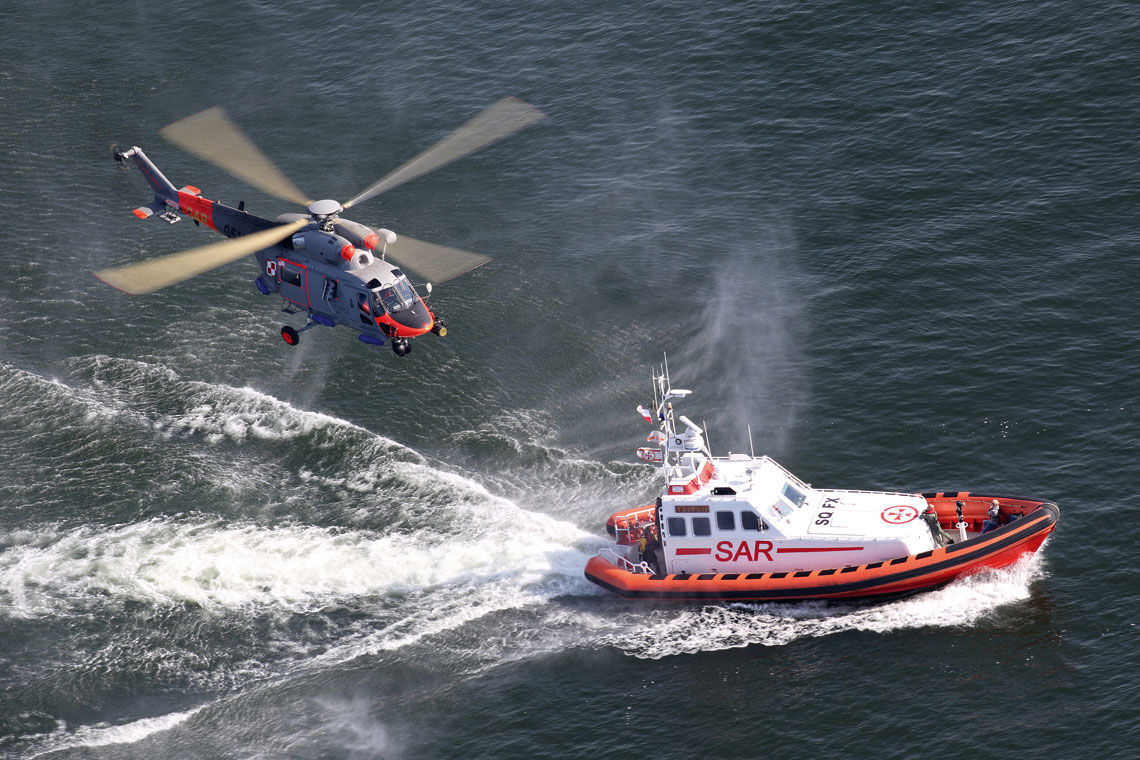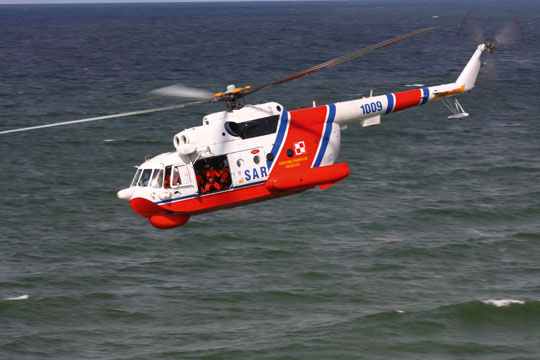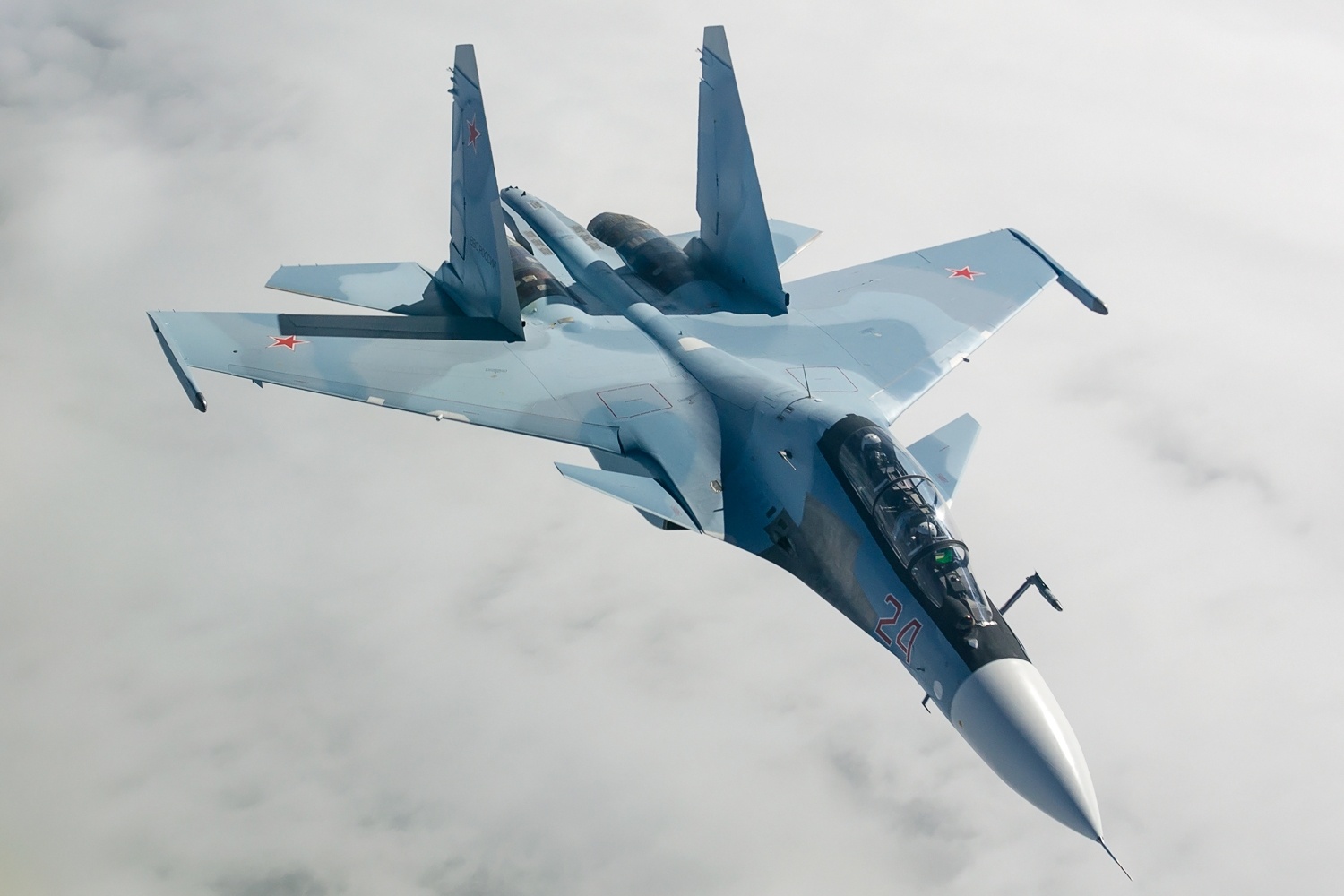
60 years of helicopters in the Polish Navy, part 3

The upgraded W-3WARM Anakonda is currently the main type of rescue helicopters of the Polish Navy. The photo shows an exercise in cooperation with the SAR 1500 Typhoon of the Maritime Search and Rescue Service. BB photo
The last ten years of naval aviation is the time that should be used for the gradual and peaceful commissioning of successors to the elderly helicopters described in the previous parts of the monograph. Unfortunately, the changeable and unexpected decisions of politicians forced the command to look for non-standard solutions, which only for a short time and did not fully preserve the ability of naval aviation to fulfill their statutory tasks.
It was also a time of further organizational changes. In 2011, all squadrons were disbanded and included in the air bases, which have been operating since 2003. Since then, the 43rd Naval Aviation Base Oksivska has been stationed at the Gdynia-Babe Doly airport. Commander Lieutenant Paul. Eduard Stanislav Shistovsky, and the 44th Naval Aviation Base "Kashubsko-Darlovsk" included two airfields - in Semirovitsy and Darlovo, where the planes were subordinate to the air groups "Kashubsk" and "Darlovsk", respectively. This structure still exists today.

Two Mi-14PL/R helicopters, converted into a rescue version, began service in 2010-2011, strengthening the search and rescue services for the next decade. The external winch and the Buran radar screen on the nose are visible. Photo Mr.
Darlowo “Palery”
In 2008-2010, Mi-14PS long-term search and rescue helicopters were decommissioned as planned. Buying their successors then seemed like a matter of the near future. The bold project of a bridge solution was also successful - a complete alteration of two “Ps” into a rescue version. Helicopters with tactical numbers 1009 and 1012 were selected, with a significant hourly reserve, but not covered by the previous modernization of anti-submarine systems. The first (more precisely the second) of them went to WZL No. 1 in April 2008.
Understanding the complexity of the task facing the Łódź team requires the realization that the reconstruction required not only the dismantling of the old and the installation of new special equipment. In order for the new helicopter to be really suitable for picking up people from the water and lifting people in a basket, especially on stretchers, the cargo compartment door had to be doubled (target opening size 1700 x 1410 mm). . This could only be achieved by serious intervention in the airframe structure, violating the power elements of the fuselage structure, including one of the frames that simultaneously supports the base plate of the power plant.
For this, a special stand was developed, which stabilizes the hull structure throughout the entire period of operation, preventing dangerous stresses and deformations of the skeleton. Specialists from Ukraine were invited to cooperate, who, after completing the work, scanned the fuselage for its rigidity and absence of deformations. It also required the restoration of electrical, hydraulic and fuel installations. All PDO operational equipment has been dismantled and systems and devices have been installed to ensure emergency rescue operations.
In the nose of the helicopter appeared fairing weather radar "Buran-A". Two fairings with reflectors and a third under the left float were added to the combat compartment. In the longitudinal fairing above the windows on the starboard side there is an air conditioning and heating system that allows you to independently control the temperature in the cockpit and in the cargo compartment. The crew has GPS and VOR / ILS receivers, a Rockwell Collins DF-430 radio compass / direction finder, a new radio altimeter and a radio station. The location of the instrument panels has been changed, taking into account the suggestions of the pilots, instruments calibrated according to the Anglo-Saxon system have been added.
To lift the wounded, an electric winch ŁG-300 (SŁP-350 systems) is used, in contrast to the Mi-14PS solution built outside the hull. The first rebuilt copy No. 1012 returned to the unit in October 2010 under the designation Mi-14PL / R, which was almost immediately changed to the proud nickname "Pałer" (phonetic spelling of the English word Power). Helicopter No. 1009, for which this was only the second overhaul, underwent a similar reconstruction between June 2008 and May 2011. For a while, this improved the position of the maritime search and rescue service, although, of course, two helicopters were far from the optimal number.
Mi-2 is holding up well
Withdrawal of the last rescue Mi-2003RM in 2005-2. did not mean the end of the era of navigation "Michalkow". The two helicopters were still used for transport and communication flights, as well as for pilot training and increased flying hours. In Gdynia, he was a real veteran, ex-commander of 5245, remaining in the service of the Polish Navy since October 1979. In April 1, Darlowo received copy No. 2009 from the Aviation Training Center in Demblin. Soon he received a spectacular painting designed by Wojciech Sankowski and Mariusz Kalinowski, referring to the colors of the seascape. The helicopter was in service until the last months of 4711, after which it was transferred to the Air Force Museum in Deblin.
This year, the updated helicopter is one of the exhibits of the exhibition dedicated to the centenary of the Polish Navy. In addition, in 2014 and 2015, two Mi-43s leased from the Air Force of the Ground Forces were used at the 2rd air base. These were Mi-2D cycle no. 3829 and Mi-2R pr. no. 6428 (in fact, both are rebuilt to the multitasking standard, but with the markings of the original versions left), were used for training and training, including flights using optical image intensifier tubes (night vision goggles). How are the "Mikhalki" in the anniversary year, I'll tell you a little further.
Successors who have gone missing
Meanwhile, in March 2012, a tender was announced for the supply of new helicopters for the Polish Armed Forces. It was originally planned to purchase 26 vehicles, including seven for BLMW (4 for PDO tasks and 3 for ATS), but soon the principle of the so-called. common platform - one basic model for all branches of the armed forces, differing in design and equipment details. At the same time, the volume of planned purchases was increased to 70 helicopters, 12 of which were to be delivered to the Navy aviation. As a result, three groups of entities joined the tender, offering the H-60 Black Hawk / Sea Hawk, AW.149 and EC225M Caracal helicopters, respectively. Six ZOP helicopters are planned for BLMW and the same number for SAR missions.
